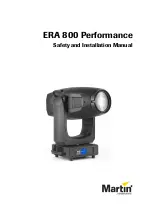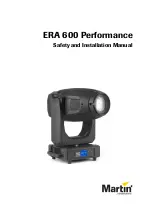
EATON
WSB11206 WCSB Tensioner / Brake with ORB Coolant Ports Installation, Operation and Maintenance Manual E-CLCL-II009-E
August 2015
6
1.1.6 WCSB tensioner / brake assemblies can be used with
either closed loop or open loop water systems.
1.1.7 This manual includes metric equivalents usually
shown in ( ) following the U.S. measurement system
value. Be sure to use the correct value.
1.2
How It Works
1.2.1 Referring to Figure 1, the gear (28) is mounted on
the shaft which is to be stopped and the tensioner
assembly is attached to the machine frame or a
reaction bracket.
Air pressure is first applied through the ports in the
mounting flange / cylinder (112) causing the piston
(33) to apply force to the pressure plate assembly
(116). As air pressure is applied through the ports
in the cylinder (19) on the spring set section of the
unit, the cylinder and pressure plate (13), which are
attached to each other with screws (20), flat washers
(17) and spacer tubes (27), move away from the
mounting flange (112), which is connected to the
machine frame or reaction bracket. The pressure plate
compresses the springs (22) and (53) against the
stationary spring housing (16). As the pressure plate
moves, the end plate subassembly (117) also moves
away from the mounting flange / cylinder until it rests
against the stop plates (125) which are axially fixed.
The pressure plate (13) then continues to move away
from the end plate subassembly and the clamp force
is removed from the disc (119) that rides on the gear.
As the end plate subassembly (117) moves towards
the stop plates, the piston (33) and friction disc
subassemblies (7) also move by means of the air
pressure initially applied. Relieving the air pressure
within the mounting flange / cylinder reduces the
clamp force applied to the friction discs, allowing
the shaft to be free to rotate. Modulation of the
air pressure then controls applied torque of WCSB
tensioner / brake assembly .
As air pressure is exhausted from both the mounting
flange / cylinder (112) and the cylinder (19), the
springs force the pressure plate (13) toward the
mounting flange, clamping the disc (119) between the
pressure plate and the end plate subassembly (117).
As the piston (33) retracts, the endplate subassembly
continues to move towards the mounting flange
/ cylinder, pressing against the friction disc
assemblies (7), reaction plate (30) and pressure
plate subassembly (116). As the pressure plate (116)
comes to rest against the mounting flange, the spring
force clamps all discs between adjacent surfaces,
applying stopping torque to the shaft.
High heat dissipation within the tensioner section
in the WCSB tensioner / brake assembly is
accomplished by passing water through a special
cavity behind copper alloy wear plates (3).
2.0 INSTALLATION
Warning
Only qualified maintenance personnel should install,
adjust or repair these units. Faulty workmanship
will result in unreasonable exposure to hazardous
conditions or personal injury.
Caution
Read these instructions thoroughly and review until
you fully understand the installation sequence before
proceeding with the work described in this section.
Failure to follow these instructions will result in
unreasonable exposure to hazardous conditions or
personal injury.
Caution
Do not paint the clamp tubes (12), (124), wear
spacers (29), or the springs (34), as this may hinder
the engagement or disengagement of the WCSB
tensioner / brake assembly.
WCSB tensioner / brake with ORB coolant ports
Summary of Contents for Airflex WSB11206
Page 1: ......







































